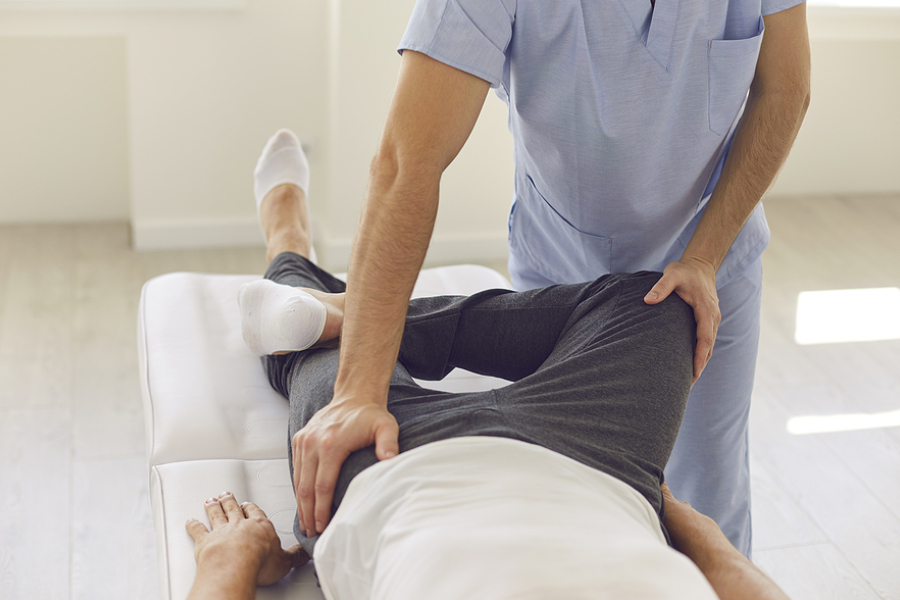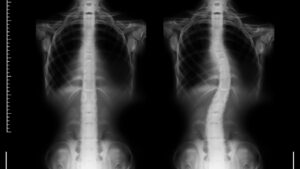One common cause of lower back and pelvic pain is pelvic tilt. Pelvic tilt is the postural misalignment of the pelvis and the spine. If left untended, it can lead to chronic or long-term damage and pain.
In this article, we will delve deep into what pelvic tilt is and what causes such pain, as well as some management methods that can help you alleviate the pain.
What is pelvic tilt?
Pelvic tilt refers to the imbalance in the position of the pelvis and the spine, leading to pain in the lower back and pelvic region. Pelvic tilt affects the natural curve of the spine and its alignment with the feet, knees and hips, resulting in pain.
As a result, many individuals with pelvic tilt usually have poor posture. This further places pressure and strain on the affected region, which, when left untreated, might lead to chronic lower back and pelvic pain.
What causes pelvic tilt?
Pelvic tilt can develop through several reasons, such as:
- Poor postural habits: Sitting and slouching for extended periods places unnecessary stress on the spine and pelvic region.
- Undetected pelvic misalignment: Accidents, falls, or injuries can cause pelvic misalignment.
- Muscle imbalances in the core, glutes, and hip muscles: Overdeveloped muscles in the pelvic region, as well as weak abdominal muscles and tight hip flexors, can cause pelvic tilts.
- Lifestyle factors: Being obese and overweight places additional strain on your spine and pelvic region, increasing your risk of developing pelvic tilt.
- Poor core strength: The pelvic region relies heavily on core strength for proper alignment. As such, having a weaker core can lead to pelvic misalignment.
Types of pelvic tilt
Pelvic tilt can primarily be categorised into posterior pelvic tilt (PPT) or anterior pelvic tilt (APT).
The posterior pelvic tilt is when the hip extensors tilts upwards, resulting in the back dropping downwards and putting a strain on the lumbar region. Some of the typical signs of PPT are stiff lower back, lower back pain during vigorous activity, pain in the hips, groins, and buttocks, as well as reduced mobility.
Anterior pelvic tilt, on the other hand, is when the hip flexors tilt downwards, resulting in the lumbar extensors stretching upwards and causing the lumbar region to curve excessively. This posture places excess strain on the lower back. Some of the typical signs of APT are lower back discomfort, thigh muscle and hamstring strains, as well as reduced core and glute strength.
How can you address and manage pelvic tilt?
There are a couple of methods that will help to alleviate the experienced symptoms and relieve chronic pain.
One of which is going for chiropractic adjustments, which will involve targeting key areas, such as lower back pain treatment. The thing about chiropractic adjustments and why it is such an effective method in addressing pelvic tilt is that they not only target the associated symptoms but also the root cause. Because pelvic tilt is caused by the misalignment of the pelvis and the spine, chiropractic adjustment can help to realign the two together.
Additionally, doing specific simple stretching and exercises that target the impacted muscle regions will not only help to reduce the associated pain and discomfort but also boost flexibility and posture. Such exercises include core rotations, lunges, squats, bridges, and plank holds. They help to strengthen your hamstrings, core, and glutes, muscles that are essential in supporting your pelvic alignment.
Finally, ensuring that you adopt the correct sleeping posture is also vital in managing lower back pain and pelvic tilt. If you suffer from APT, sleeping on your side with a pillow between your legs will help to reduce the strain on your lumbar region, ensuring that it remains in a neutral position. On the other hand, if you suffer from PPT, sleeping on your back with a pillow under your knees will help to reduce the strain on your lumbar region, ensuring it remains in a neutral position.
Conclusion
Pelvic tilt is a common misalignment condition that can result in chronic lower back discomfort and pain. Do not underestimate it, as it can lead to long-term damage if left untended. Fortunately, with the proper postural habits and chiropractic care, you can address it effectively.
At Healing Hands Chiropractic, our chiropractors are well-versed in managing pelvic tilts using a combination of targeted pelvic and spinal adjustments. Do not leave your lower back and pelvic pain unchecked. Contact our team today, and we will help you find the best treatment approach for you!




